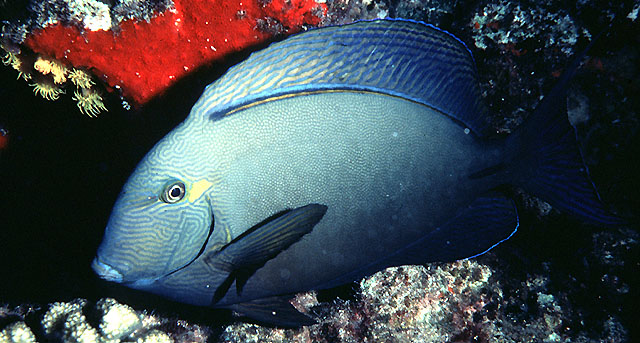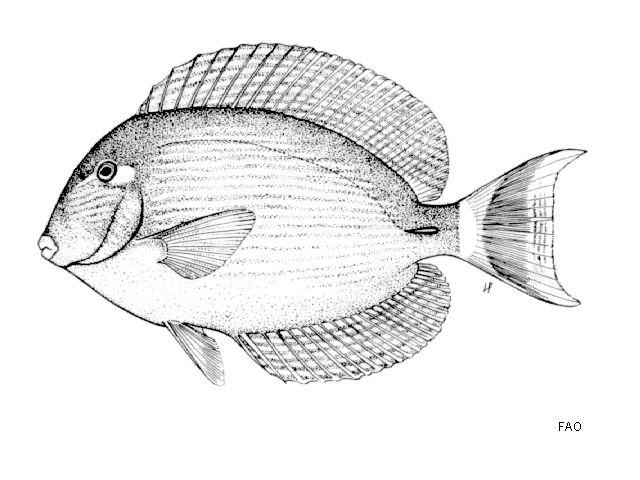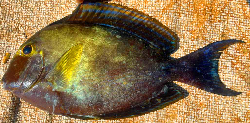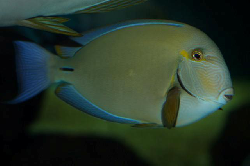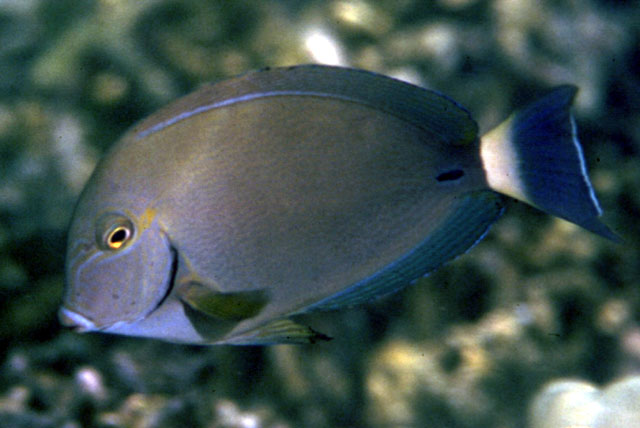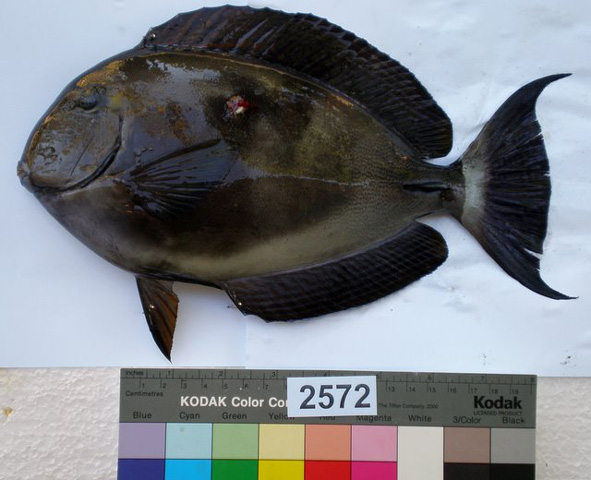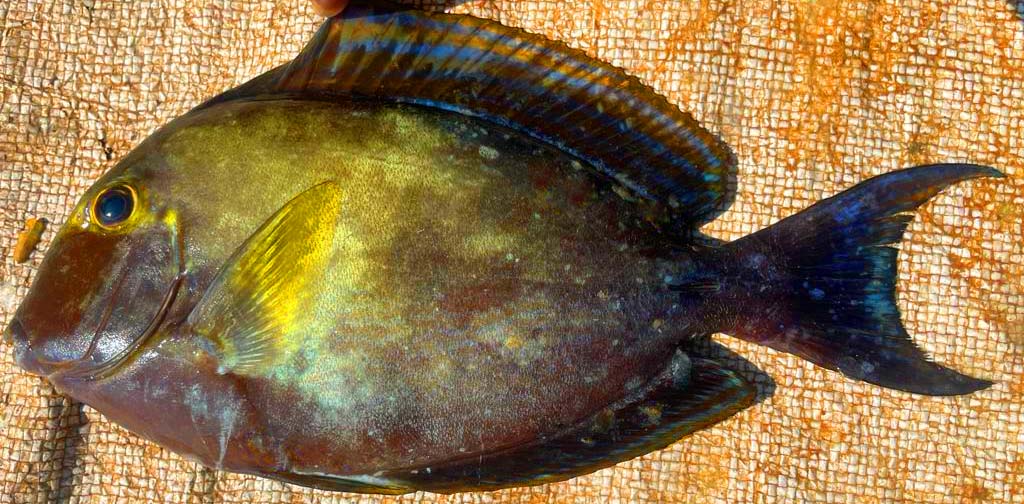Acanthurus blochii Valenciennes, 1835
Description
Dorsal spines (total): 9; Dorsal soft rays (total): 25 - 27; Anal spines: 3; Anal soft rays: 24 - 25. Color in life bluish grey with numerous yellowish brown spots which tend to form irregular longitudinal lines; head with narrow irregular stripes; behind eye a yellow spot; brown pectoral fins; base of caudal fin with white bar. Caudal spine large, 3 - 4.4 in head. Stomach gizzard-like. Differs from A. dussumieri by having vertical stripes instead of spots on the blue central area of the caudal fin, from A. mata by having a lunate caudal fin, and from A. xanthopterus by having plain brown to blue-grey pectoral fins (Ref. 1602). The white ring around the base of the tail varies in intensity and may occasionally be absent (Ref. 1602).
Common Names
Taxonomic Hierarchy
Kingdom: Animalia
Phylum: Chordata
Class: Teleostei
Order: Acanthuriformes
Family: Acanthuridae
Genus: Acanthurus
Species: Acanthurus blochii Valenciennes, 1835
Climate Zone
Location
Biology
Adults occur in outer lagoon and seaward reefs, usually seen in small groups and school in some oceanic locations (Ref. 48637). Benthopelagic (Ref. 58302). They feed primarily on the algal film covering compacted sand, ingesting the usual component of sand which probably aids in the trituration of the algal food in the thick-walled stomach, also feed on diatoms and detritus (Ref. 3921).
Habitat
associated
Conservation Status
Least Concern
Threat to Humans
Harmless
